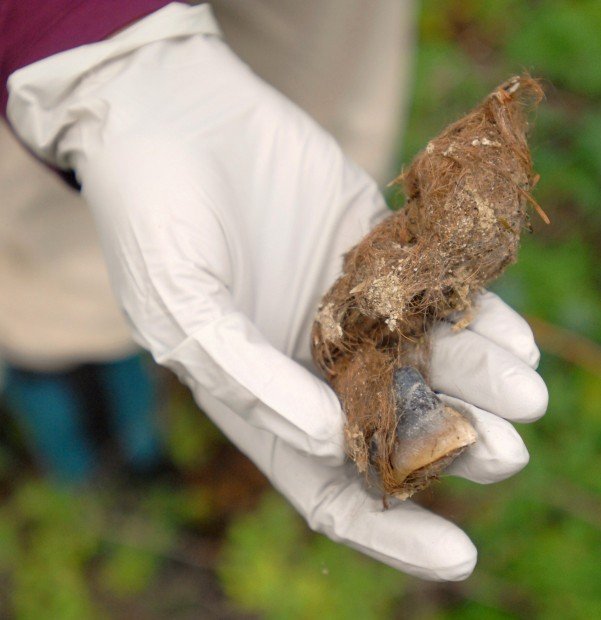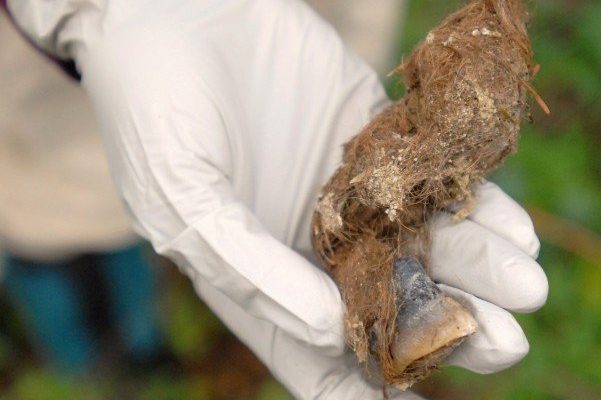
Imagine you’re out in the wilderness, enjoying the beauty of nature, when you spot something unusual on an animal. It’s a bit unsettling, isn’t it? If you’re involved in wildlife rescue, identifying things like wolf worms can be crucial. These parasites can affect wildlife and need proper attention. Don’t worry! This guide will walk you through the basics of wolf worm identification and how to handle them.
Wolf worms, or cuterebra, are parasites commonly found in rural areas, often affecting small mammals like rabbits and rodents. It’s essential to recognize them because they can pose significant health risks to these animals. Knowing how to identify wolf worms can make a huge difference in wildlife rehabilitation efforts.
What Are Wolf Worms?
Wolf worms are the larvae of the cuterebra fly, typically found in the summer months. They enter their host through the skin, where they grow inside, creating a hole on the surface. This might sound horrifying, but it’s how the larvae live and develop until they’re ready to emerge as adult flies. Imagine a tiny parasite using its host almost like an incubator—pretty wild, right?
You might be wondering how these worms affect their hosts. When wolf worms invade, they can cause significant discomfort and even infections. Signs to look for include swelling, skin lesions, or behavioral changes in the affected animal. These changes can signal that the animal is in distress, which is why identifying wolf worms quickly is crucial in wildlife rescue.
Identifying Wolf Worms
So, how do you actually identify a wolf worm? First, look for the characteristic breathing hole. This is where the larva comes through the skin. The hole is often surrounded by inflammation and swelling. If you spot this, you’re likely dealing with a wolf worm.
Next, consider the animal’s behavior. If a normally active creature becomes lethargic or shows signs of discomfort, you might need to take a closer look. Signs such as scratching at the affected area or hiding more than usual can hint at a wolf worm infestation. Think of it as a “red flag” in wildlife care.
Common Symptoms of Wolf Worm Infestation
Recognizing the symptoms of a wolf worm infestation can save an animal’s life. Some of the common symptoms to watch for include:
- Visible swelling or lumps under the skin
- Redness or irritation around the wound site
- Abnormal behavior, such as hiding or reluctance to move
- Increased grooming in the affected area
If you notice any of these symptoms, it’s time to act. The sooner you identify the problem, the sooner you can provide help. It’s important to remember that while wolf worms can be harmful, timely intervention can lead to successful recovery for the animal.
How to Treat Wolf Worms
Once you identify a wolf worm, treatment becomes your next step. Usually, the best course of action is to consult with a wildlife veterinarian who can provide specialized treatment. They’ll likely recommend removing the larva through a surgical procedure—sounds a bit intimidating, right? But this is often the safest way for the animal.
While waiting for veterinary help, you can keep the affected area clean and monitor the animal’s behavior. Avoid applying any ointments or creams without professional advice, as these may do more harm than good. Trust me; it’s best to leave the heavy lifting to the professionals in wildlife rescue.
Preventing Wolf Worm Infestations
Preventing wolf worm infestations is crucial in wildlife rescue. By understanding their life cycle and habitats, you can help protect vulnerable wildlife. Keeping the environment clean, reducing rodent populations, and checking animals for wolf worms regularly can make a significant difference.
Consider setting up wildlife-friendly habitats. This means creating safe spaces for animals to thrive without the risk of parasitic infections. Additionally, educating the local community about wolf worms helps raise awareness and encourages wildlife care. After all, it takes a village to protect our furry friends!
Identifying wolf worms in rural wildlife rescue may seem daunting, but with the right knowledge, you can make a positive impact. Remember to look for the physical signs like skin lesions, and don’t hesitate to reach out for professional help when needed. The more we understand these parasitic invaders, the better equipped we are to help our wildlife neighbors thrive.
So, next time you’re out there in the wild, keep your eyes peeled for these little critters that could be causing big problems. With a little awareness and action, we can protect our local wildlife from the hidden dangers of wolf worms.

